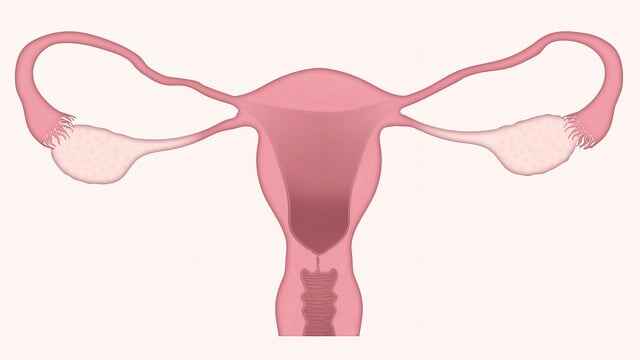What is Uterine Cancer?
Uterine cancer is the most prevalent type of cancer that affects the female reproductive system. Uterine cancer arises when healthy cells in the uterus change and grow uncontrollably, resulting in a tumor.
It is a concern for all women as long as they have a uterus, but the risk increases with age. Menopause is the stage of life when menstrual periods stop, and it is during this stage that the majority of uterine malignancies are discovered in female patients.
Also Read: Cervical Cancer: Symptoms, Causes, Risk Factors, Diagnosis, Prevention, Facts

Types
It is classified into two types:
- Endometrial cancer – It occurs in the endometrium, the uterine lining. One of the most prevalent gynecologic malignancies, or cancers of the reproductive system, is this one.
- Sarcoma – This specific type of uterine cancer grows in the myometrium, the uterine muscle, or the tissues that support the uterine glands. Source
Causes
While the precise cause of uterine cancer in women may not be understood, there are some risk factors that are closely associated with the condition, such as obesity and high blood sugar.
Risk Factors
The risk of acquiring uterine cancer may be increased by the following factors:
- After age 50.
- Periods before the age of 12 and menopause beyond the age of 50.
- Never having children.
- Irregular cycles of menstruation.
- Being obese or overweight.
- Having diabetes or high blood pressure.
- Increased wall thickness (endometrial hyperplasia).
- Breast, ovarian, or uterine cancer in the family.
- Having a genetic disorder like Lynch syndrome or Cowden syndrome.
- Polycystic ovary syndrome or prior ovarian tumors.
- Hormone replacement therapy or fertility treatment based solely on estrogen.
- Previous pelvic radiation therapy.
- Taking tamoxifen for the treatment of breast cancer (the benefits of doing so typically outweigh the danger of developing uterine cancer. Source
Symptoms
The most prevalent symptom of this cancer is unusual vaginal bleeding, particularly after menopause. Other typical symptoms include:
- A change in your periods or heavier than usual periods.
- Uterine bleeding in between periods.
- Continuous menstruation.
- A fluid discharge with a strong odor.
- Weight loss.
- Abdominal pain.
- Difficulty in urination.

Diagnosis
There are many tests available to diagnose this cancer:
- A vaginal, cervix, uterus, fallopian tubes, ovaries, and rectum examination. A Pap test is frequently combined with a pelvic examination.
- Internal organs will be examined by inserting a wand-like ultrasound probe into the vagina of a doctor or ultrasound technician.
- Endometrial biopsy or curettage (D&C) is the small device that is used to remove tissue from inside the uterus during this surgery.
- An ultrasound creates a picture of interior organs by using sound waves. An ultrasound wand is placed into the vagina and pointed at the uterus to take photographs during a transvaginal ultrasound.
- Your doctor may advise you to undertake laboratory testing on a tumor sample to identify specific genes, proteins, and other tumor-specific components. Source
Treatment
Most women with uterine cancer will require only surgery, especially if the cancer is detected early and has not progressed to other parts of the body. More treatments include:
- Surgery
- Radiation Therapy
- Hormone Therapy
- Chemotherapy
- Palliative care
- Targeted Therapy
- Immunotherapy
When do we see a doctor
Discuss with your doctor how frequently you should be examined for uterine cancer, especially if you feel you have risk factors. While these measures may help reduce the risk of uterine cancer, they are not appropriate for everyone, and each one has risks and benefits.
Prevention
It cannot currently be prevented. However, doing these things may lessen your risk of developing uterine cancer.
- Using contraceptive tablets.
- Keeping a healthy weight and engaging in physical activity.
- If you are taking estrogen, you should take progesterone.
Also Read: Prostate Cancer: Symptoms, Causes, Risk Factors, Diagnosis, Prevention, Facts





